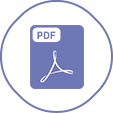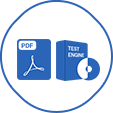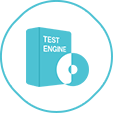Part 1: What is Strategic Sourcing? (10 marks)
Strategic sourcing is a systematic and proactive approach to procurement that focuses on aligning purchasing decisions with an organization’s long-term goals to maximize value, reduce costs, and mitigate risks. In the context of the CIPS L5M4 Advanced Contract and Financial Management study guide, strategic sourcing goes beyond transactional buying to build supplier relationships and optimize the supply chain for financial and operational efficiency. Below is a step-by-step explanation:
Definition:
Strategic sourcing involves analyzing an organization’s spending, identifying sourcing opportunities, selecting suppliers, and managing relationships to achieve strategic objectives.
It emphasizes value creation over simply minimizing costs.
Purpose:
Aims to ensure supply chain reliability, improve quality, and deliver financial benefits like cost savings or ROI.
Example: A company uses strategic sourcing to consolidate suppliers, reducing procurement costs by 15%.
Part 2: What Factors Can Influence Strategic Sourcing? (15 marks)
Several internal and external factors can impact the strategic sourcing process, affecting how an organization approaches supplier selection and contract management. Below are five key factors:
Market Conditions:
Economic trends, such as inflation or supply shortages, influence supplier pricing and availability.
Example: A rise in raw material costs may force a shift to alternative suppliers.
Organizational Goals and Strategy:
The company’s priorities (e.g., sustainability, cost leadership) shape sourcing decisions.
Example: A focus on green initiatives may prioritize suppliers with eco-friendly practices.
Supplier Capabilities and Performance:
The supplier’s ability to meet quality, delivery, and innovation requirements affects selection.
Example: A supplier with a poor track record for on-time delivery may be excluded.
Regulatory and Compliance Requirements:
Legal or industry standards (e.g., safety, environmental regulations) dictate sourcing choices.
Example: Sourcing must comply with EU REACH regulations for chemical suppliers.
Technology and Innovation:
Advances in technology (e.g., automation, data analytics) can change sourcingstrategies by enabling better supplier evaluation or collaboration.
Example: Using AI to analyze supplier performance data for better decision-making.
Exact Extract Explanation:
Part 1: What is Strategic Sourcing?
The CIPS L5M4 Advanced Contract and Financial Management study guide defines strategic sourcing as "a structured process to optimize an organization’s supply base and improve the overall value proposition." It is positioned as a key procurement strategy that integrates financial management principles, such as cost optimization and risk mitigation, with long-term business objectives. The guide emphasizes that strategic sourcing is not just about cost reduction but about "delivering sustainable value" through supplier partnerships.
Detailed Explanation:
The guide outlines that strategic sourcing involves steps like spend analysis, market research, supplier evaluation, and contract negotiation. For example, a company might analyze its spending on raw materials, identify over-reliance on a single supplier, and strategically diversify to reduce risk.
It aligns with L5M4’s focus on value for money by ensuring procurement decisions support broader goals, such as quality improvement or innovation. Strategic sourcing also fosters collaboration, as seen in practices like Early Supplier Involvement (Question 8).
Part 2: Factors Influencing Strategic Sourcing
The study guide discusses various influences on sourcing strategies, particularly in the context of supplier selection and contract management, emphasizing the need to adapt to internal and external dynamics.
Factors Explained:
Market Conditions:
The guide highlights that "external market forces" like commodity price volatility or supply chain disruptions (e.g., post-COVID shortages) impact sourcing. A buyer might need to source locally if global supply chains are unstable, affecting cost and lead times.
Organizational Goals and Strategy:
Chapter 2 notes that sourcing must "align with corporate objectives." For instance, if a company prioritizes sustainability (a strategic goal), it may source from suppliers with low carbon footprints, even if they’re costlier.
Supplier Capabilities and Performance:
The guide stresses evaluating "supplier suitability" based on quality, reliability, and innovation capacity (as in Question 2). A supplier unable to scale production might be unsuitable for a growing business.
Regulatory and Compliance Requirements:
L5M4’s risk management section underscores the need to comply with "legal and regulatory frameworks." For example, sourcing electronics components must meet RoHS standards, limiting supplier options.
Technology and Innovation:
The guide recognizes that "technological advancements" enable better sourcing decisions. Tools like e-procurement platforms or data analytics (e.g., for spend analysis) help identify cost-saving opportunities or high-performing suppliers.
Practical Application:
For XYZ Ltd (Question 7), strategic sourcing might involve selecting a raw material supplier based on cost, quality, and sustainability. Market conditions (e.g., steel price hikes) might push them to local suppliers, while a strategic goal of reducing emissions influences them to choose a supplier with green certifications. Supplier performance (e.g., 98% on-time delivery), compliance with safety regulations, andthe use of tech for supplier evaluation would further shape their approach.
Broader Implications:
The guide advises that these factors are interconnected—e.g., market conditions might force a reassessment of organizational goals. A balanced sourcing strategy considers all factors to mitigate risks and maximize value, aligning with L5M4’s financial and operational focus.
Regular reviews of these factors ensure sourcing remains adaptive, such as shifting suppliers if new regulations emerge or technology improves.
[:, CIPS L5M4 Study Guide, Chapter 2: Performance Management in Contracts, Section on Strategic Procurement and Sourcing., Additional Reference: Chapter 4: Financial Management in Contracts, Section on Risk Management and Value Optimization., , ]








